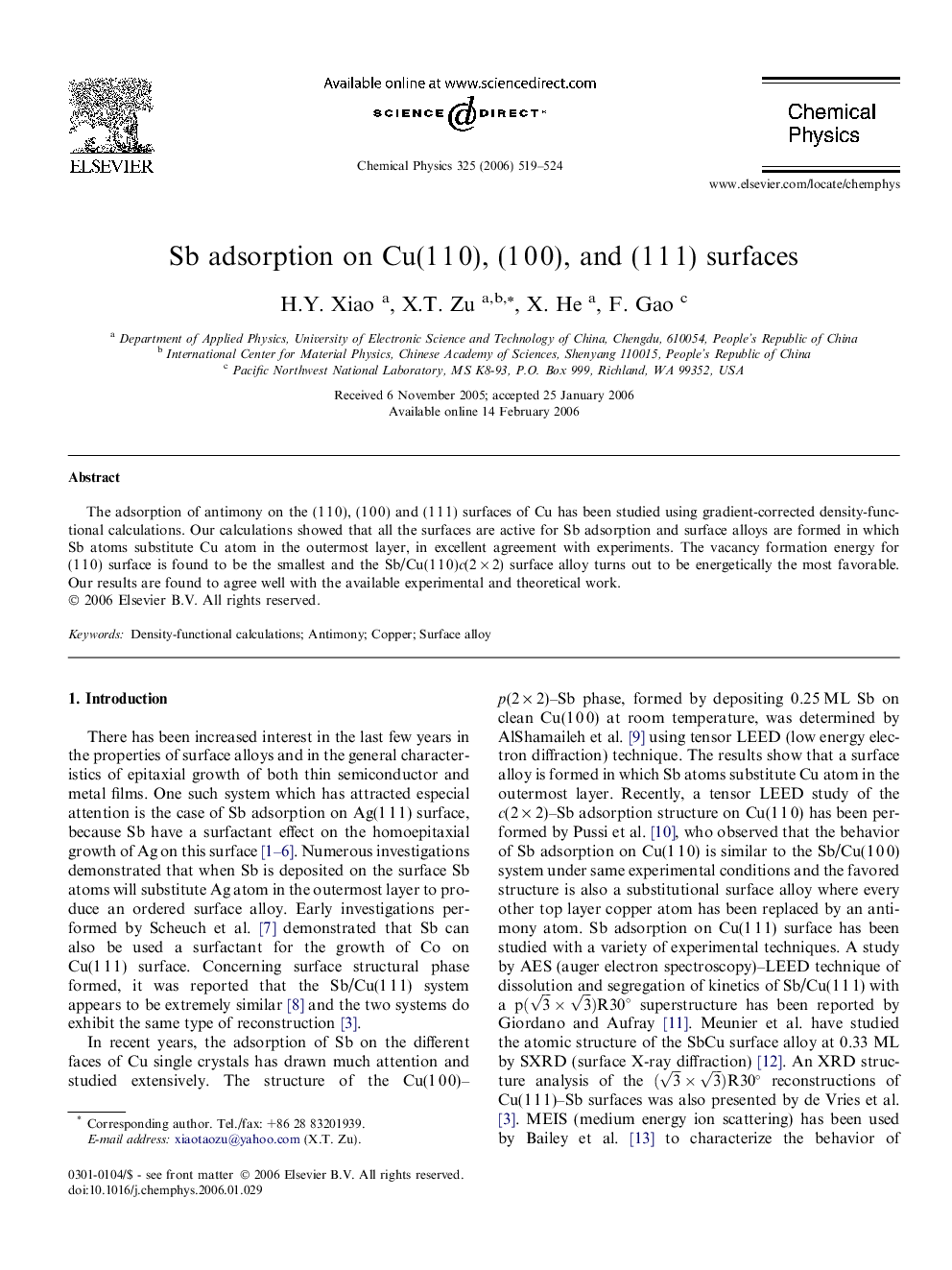| Article ID | Journal | Published Year | Pages | File Type |
|---|---|---|---|---|
| 5377002 | Chemical Physics | 2006 | 6 Pages |
Abstract
The adsorption of antimony on the (1Â 1Â 0), (1Â 0Â 0) and (1Â 1Â 1) surfaces of Cu has been studied using gradient-corrected density-functional calculations. Our calculations showed that all the surfaces are active for Sb adsorption and surface alloys are formed in which Sb atoms substitute Cu atom in the outermost layer, in excellent agreement with experiments. The vacancy formation energy for (1Â 1Â 0) surface is found to be the smallest and the Sb/Cu(1Â 1Â 0)c(2Â ÃÂ 2) surface alloy turns out to be energetically the most favorable. Our results are found to agree well with the available experimental and theoretical work.
Related Topics
Physical Sciences and Engineering
Chemistry
Physical and Theoretical Chemistry
Authors
H.Y. Xiao, X.T. Zu, X. He, F. Gao,
